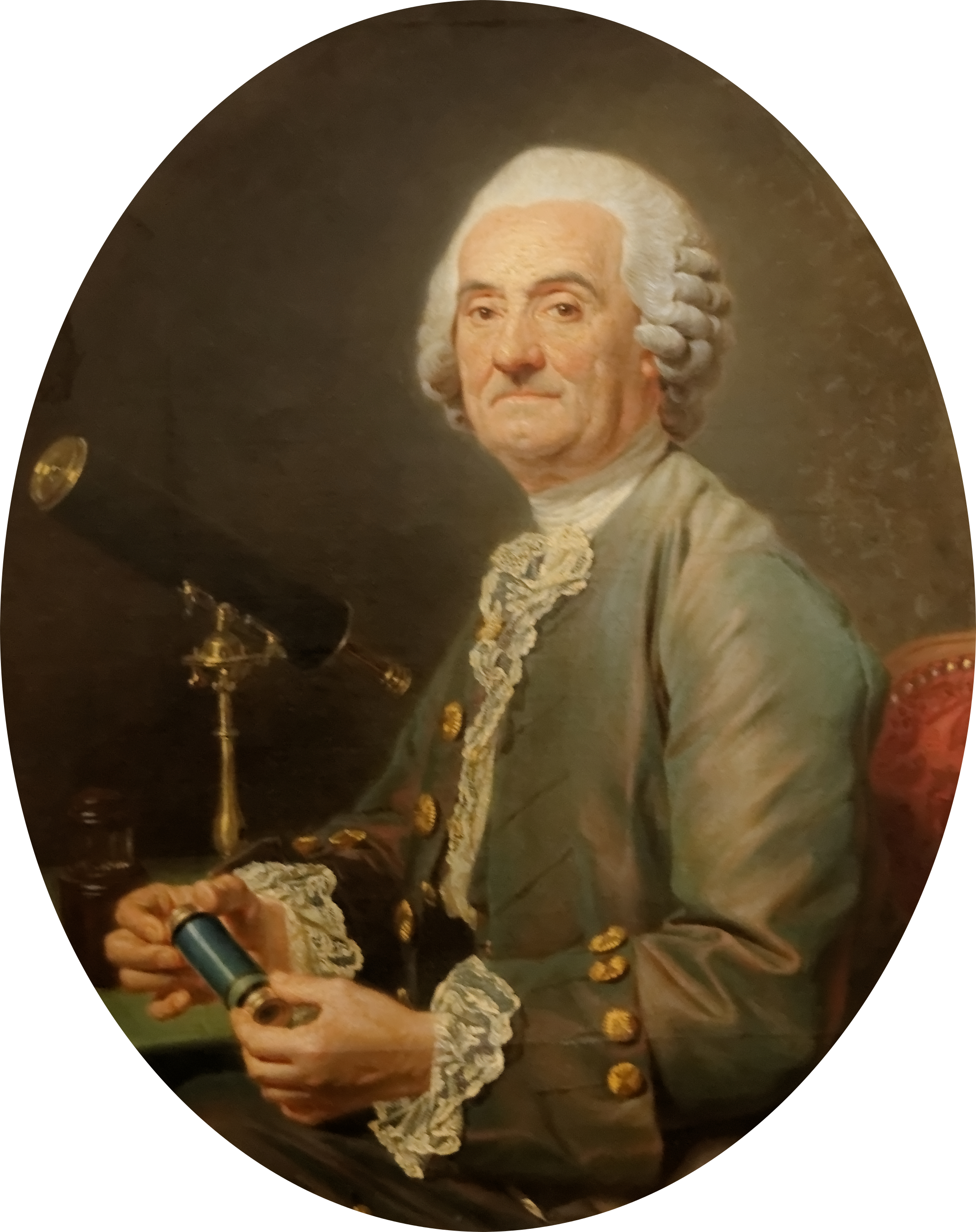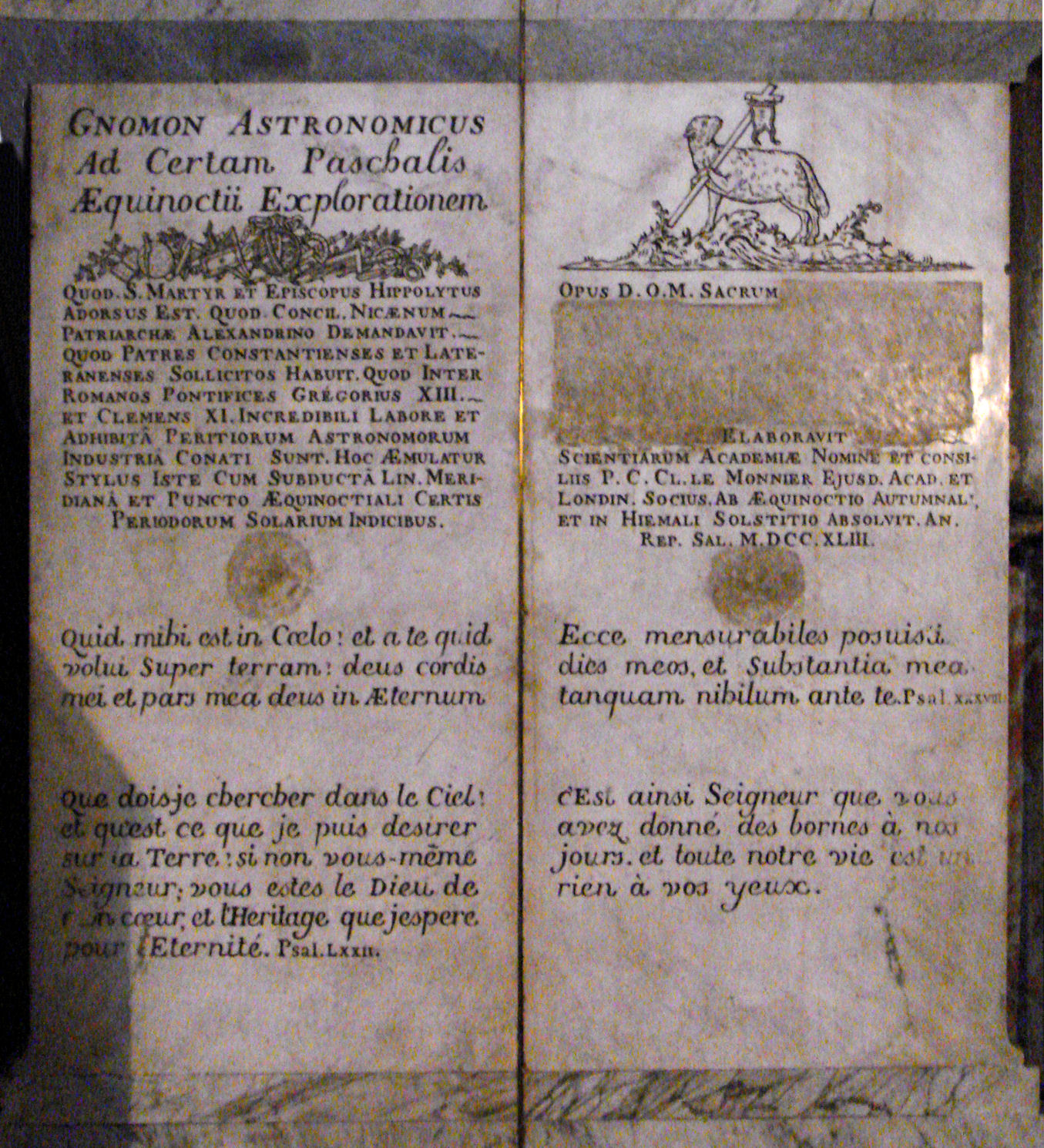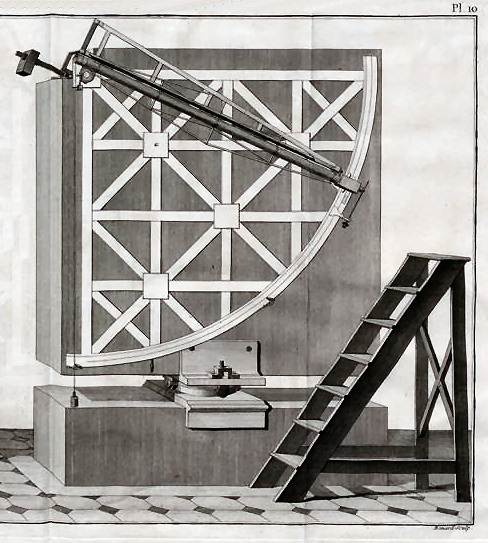Pierre Charles Lemonnier on:
[Wikipedia]
[Google]
[Amazon]
 Pierre Charles Le Monnier (; 23 November 1715 – 3 April 1799) was a French astronomer. His name is sometimes given as Lemonnier.
Pierre Charles Le Monnier (; 23 November 1715 – 3 April 1799) was a French astronomer. His name is sometimes given as Lemonnier.
 His persistent recommendation of British methods and instruments contributed effectively to the reform of French practical astronomy, and constituted the most eminent of his services to science. He corresponded with James Bradley, was the first to represent the effects of nutation in the solar tables, and introduced, in 1741, the use of the transit-instrument at the
His persistent recommendation of British methods and instruments contributed effectively to the reform of French practical astronomy, and constituted the most eminent of his services to science. He corresponded with James Bradley, was the first to represent the effects of nutation in the solar tables, and introduced, in 1741, the use of the transit-instrument at the
Lists of Fellows of the Royal Society 1660 – 2007
URL. Retrieved 19 February 2010. and was one of the 144 original members of the Institute. On 29 January 1745 he also became a member of the Prussian Academy of Sciences.Berlin-Brandenburgische Akademie der Wissenschaften
Mitglieder der Vorgänger-Akademien
URL. Retrieved 19 February 2010. The crater Le Monnier on the Moon is named after him.
 *''Histoire céleste'' (1741)
*''Théorie des comètes'' (1743, a translation, with additions of Halley's ''Synopsis'')
*''Institutions astronomiques'' (1746, an improved translation of John Keill's textbook)
*''Nouveau zodiaque'' (1755)
*''Observations de la lune, du soleil, et des étoiles fixes'' (1751–1775)
*''Lois du magnétisme'' (1776–1778)
*''Histoire céleste'' (1741)
*''Théorie des comètes'' (1743, a translation, with additions of Halley's ''Synopsis'')
*''Institutions astronomiques'' (1746, an improved translation of John Keill's textbook)
*''Nouveau zodiaque'' (1755)
*''Observations de la lune, du soleil, et des étoiles fixes'' (1751–1775)
*''Lois du magnétisme'' (1776–1778)
 Pierre Charles Le Monnier (; 23 November 1715 – 3 April 1799) was a French astronomer. His name is sometimes given as Lemonnier.
Pierre Charles Le Monnier (; 23 November 1715 – 3 April 1799) was a French astronomer. His name is sometimes given as Lemonnier.
Biography
Le Monnier was born in Paris, where his fatherPierre
Pierre is a masculine given name. It is a French form of the name Peter. Pierre originally meant "rock" or "stone" in French (derived from the Greek word πέτρος (''petros'') meaning "stone, rock", via Latin "petra"). It is a translation ...
(1675–1757), also an astronomer, was professor of philosophy at the college d'Harcourt.
His first recorded astronomical observation was made before he was sixteen, and the presentation of an elaborate lunar map resulted in his admission to the French Academy of Sciences
The French Academy of Sciences (French: ''Académie des sciences'') is a learned society, founded in 1666 by Louis XIV of France, Louis XIV at the suggestion of Jean-Baptiste Colbert, to encourage and protect the spirit of French Scientific me ...
, on 21 April 1736, aged only 20. He was chosen in the same year to accompany Pierre Louis Maupertuis and Alexis Clairaut on their geodetical expedition for measuring a meridian arc of approximately one degree
Degree may refer to:
As a unit of measurement
* Degree (angle), a unit of angle measurement
** Degree of geographical latitude
** Degree of geographical longitude
* Degree symbol (°), a notation used in science, engineering, and mathematics
...
's length to Torne Valley
The Torne, also known as the Tornio ( fi, Tornionjoki, sv, Torne älv, , se, Duortneseatnu, fit, Tornionväylä), is a river in northern Sweden and Finland. For approximately half of its length, it defines the border between these two countr ...
in Lapland
Lapland may refer to:
Places
*Lapland or Sápmi, an ethno-cultural region stretching over northern Fennoscandia (parts of Norway, Sweden, Finland, and Russia)
**Lapland (Finland) (''Lappi''/''Lappland''), a Finnish region
*** Lapland (former pr ...
. In 1738, shortly after his return, he explained, in a memoir read before the Academy, the advantages of John Flamsteed's mode of determining right ascension
Right ascension (abbreviated RA; symbol ) is the angular distance of a particular point measured eastward along the celestial equator from the Sun at the March equinox to the (hour circle of the) point in question above the earth.
When paired w ...
s.
 His persistent recommendation of British methods and instruments contributed effectively to the reform of French practical astronomy, and constituted the most eminent of his services to science. He corresponded with James Bradley, was the first to represent the effects of nutation in the solar tables, and introduced, in 1741, the use of the transit-instrument at the
His persistent recommendation of British methods and instruments contributed effectively to the reform of French practical astronomy, and constituted the most eminent of his services to science. He corresponded with James Bradley, was the first to represent the effects of nutation in the solar tables, and introduced, in 1741, the use of the transit-instrument at the Paris Observatory
The Paris Observatory (french: Observatoire de Paris ), a research institution of the Paris Sciences et Lettres University, is the foremost astronomical observatory of France, and one of the largest astronomical centers in the world. Its histor ...
. He visited England in 1748, and, in company with the Earl of Morton and James Shore the optician, continued his journey to Scotland, where he observed the annular eclipse of 25 July.
The liberality of King Louis XV of France, in whose favour Le Monnier stood high, furnished him with the means of procuring the best instruments, many made in Britain. Amongst the fruits of his industry may be mentioned a laborious investigation of the disturbances of Jupiter by Saturn
Saturn is the sixth planet from the Sun and the second-largest in the Solar System, after Jupiter. It is a gas giant with an average radius of about nine and a half times that of Earth. It has only one-eighth the average density of Earth; h ...
, the results of which were employed and confirmed by Euler
Leonhard Euler ( , ; 15 April 170718 September 1783) was a Swiss mathematician, physicist, astronomer, geographer, logician and engineer who founded the studies of graph theory and topology and made pioneering and influential discoveries in ma ...
in his prize essay of 1748; a series of lunar observations extending over fifty years; some interesting researches in terrestrial magnetism and atmospheric electricity, in the latter of which he detected a regular diurnal period; and the determination of the places of a great number of stars, including at least twelve separate observations of Uranus, between 1750 and its discovery as a planet. In his lectures at the Collège de France he first publicly expounded the analytical theory of gravitation
In physics, gravity () is a fundamental interaction which causes mutual attraction between all things with mass or energy. Gravity is, by far, the weakest of the four fundamental interactions, approximately 1038 times weaker than the stron ...
, and his timely patronage secured the services of J. J. Lalande for astronomy.
Le Monnier's temper and hasty speech resulted in many arguments and grudges. He fell out with Lalande "during an entire revolution of the moon's nodes". His career was ended by paralysis
Paralysis (also known as plegia) is a loss of motor function in one or more muscles. Paralysis can also be accompanied by a loss of feeling (sensory loss) in the affected area if there is sensory damage. In the United States, roughly 1 in 50 ...
late in 1791, and a repetition of the stroke terminated his life. He died at Héril near Bayeux
Bayeux () is a Communes of France, commune in the Calvados (department), Calvados Departments of France, department in Normandy (administrative region), Normandy in northwestern France.
Bayeux is the home of the Bayeux Tapestry, which depicts ...
. By his marriage with Mademoiselle de Cussy he left three daughters, one of whom became the wife of J. L. Lagrange.
Le Monnier was admitted on 5 April 1739 to the Royal Society,The Royal SocietyLists of Fellows of the Royal Society 1660 – 2007
URL. Retrieved 19 February 2010. and was one of the 144 original members of the Institute. On 29 January 1745 he also became a member of the Prussian Academy of Sciences.Berlin-Brandenburgische Akademie der Wissenschaften
Mitglieder der Vorgänger-Akademien
URL. Retrieved 19 February 2010. The crater Le Monnier on the Moon is named after him.
Works
 *''Histoire céleste'' (1741)
*''Théorie des comètes'' (1743, a translation, with additions of Halley's ''Synopsis'')
*''Institutions astronomiques'' (1746, an improved translation of John Keill's textbook)
*''Nouveau zodiaque'' (1755)
*''Observations de la lune, du soleil, et des étoiles fixes'' (1751–1775)
*''Lois du magnétisme'' (1776–1778)
*''Histoire céleste'' (1741)
*''Théorie des comètes'' (1743, a translation, with additions of Halley's ''Synopsis'')
*''Institutions astronomiques'' (1746, an improved translation of John Keill's textbook)
*''Nouveau zodiaque'' (1755)
*''Observations de la lune, du soleil, et des étoiles fixes'' (1751–1775)
*''Lois du magnétisme'' (1776–1778)
References
;Attribution *External links
{{DEFAULTSORT:Le Monnier, Pierre 1715 births 1799 deaths Scientists from Paris 18th-century French astronomers Members of the French Academy of Sciences Fellows of the Royal Society mr:पियरे ले मॉनिये